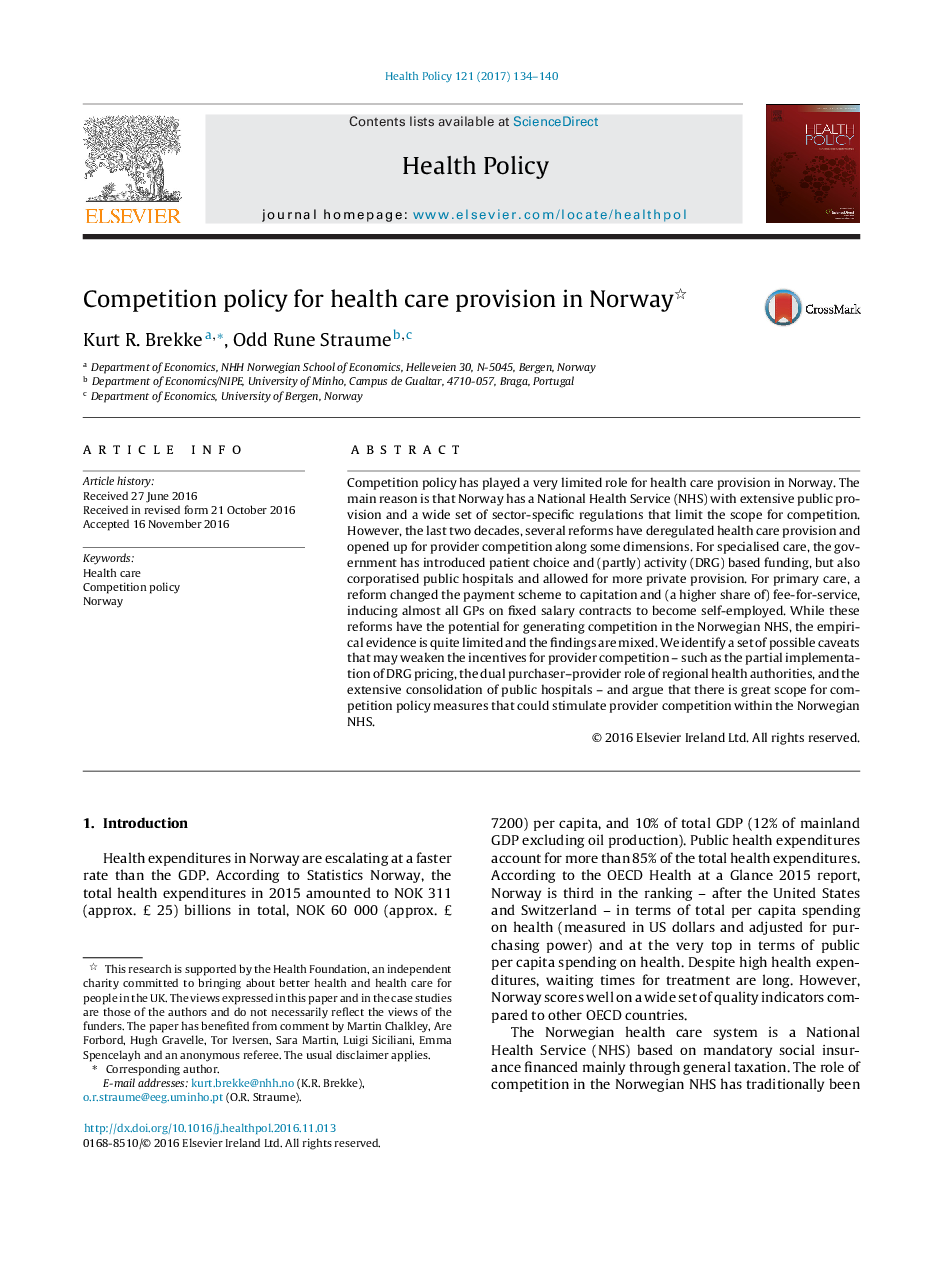| Article ID | Journal | Published Year | Pages | File Type |
|---|---|---|---|---|
| 5723500 | Health Policy | 2017 | 7 Pages |
â¢Standard competition policy plays a limited role in the Norwegian NHS.â¢Competition policy is indirect through reforms introducing provider competition.â¢Examples include patient choice, activity-based funding, and private provider contracting.â¢Evidence for pro-competitive effects is weak and inconclusive.â¢Possible reasons are partial DRG-pricing, dual purchaser-provider role, and consolidation.
Competition policy has played a very limited role for health care provision in Norway. The main reason is that Norway has a National Health Service (NHS) with extensive public provision and a wide set of sector-specific regulations that limit the scope for competition. However, the last two decades, several reforms have deregulated health care provision and opened up for provider competition along some dimensions. For specialised care, the government has introduced patient choice and (partly) activity (DRG) based funding, but also corporatised public hospitals and allowed for more private provision. For primary care, a reform changed the payment scheme to capitation and (a higher share of) fee-for-service, inducing almost all GPs on fixed salary contracts to become self-employed. While these reforms have the potential for generating competition in the Norwegian NHS, the empirical evidence is quite limited and the findings are mixed. We identify a set of possible caveats that may weaken the incentives for provider competition - such as the partial implementation of DRG pricing, the dual purchaser-provider role of regional health authorities, and the extensive consolidation of public hospitals - and argue that there is great scope for competition policy measures that could stimulate provider competition within the Norwegian NHS.
